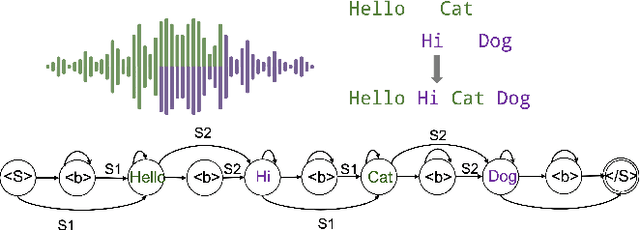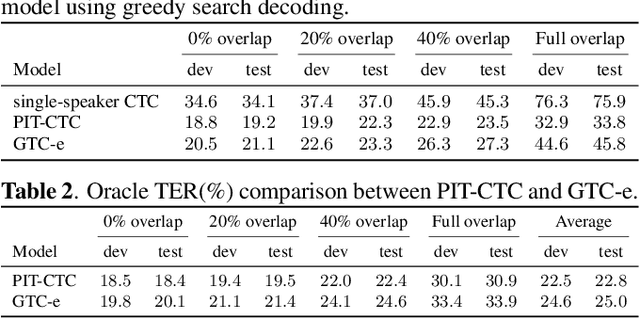Extended Graph Temporal Classification for Multi-Speaker End-to-End ASR
Paper and Code
Mar 01, 2022



Graph-based temporal classification (GTC), a generalized form of the connectionist temporal classification loss, was recently proposed to improve automatic speech recognition (ASR) systems using graph-based supervision. For example, GTC was first used to encode an N-best list of pseudo-label sequences into a graph for semi-supervised learning. In this paper, we propose an extension of GTC to model the posteriors of both labels and label transitions by a neural network, which can be applied to a wider range of tasks. As an example application, we use the extended GTC (GTC-e) for the multi-speaker speech recognition task. The transcriptions and speaker information of multi-speaker speech are represented by a graph, where the speaker information is associated with the transitions and ASR outputs with the nodes. Using GTC-e, multi-speaker ASR modelling becomes very similar to single-speaker ASR modeling, in that tokens by multiple speakers are recognized as a single merged sequence in chronological order. For evaluation, we perform experiments on a simulated multi-speaker speech dataset derived from LibriSpeech, obtaining promising results with performance close to classical benchmarks for the task.
 Add to Chrome
Add to Chrome Add to Firefox
Add to Firefox Add to Edge
Add to Edge